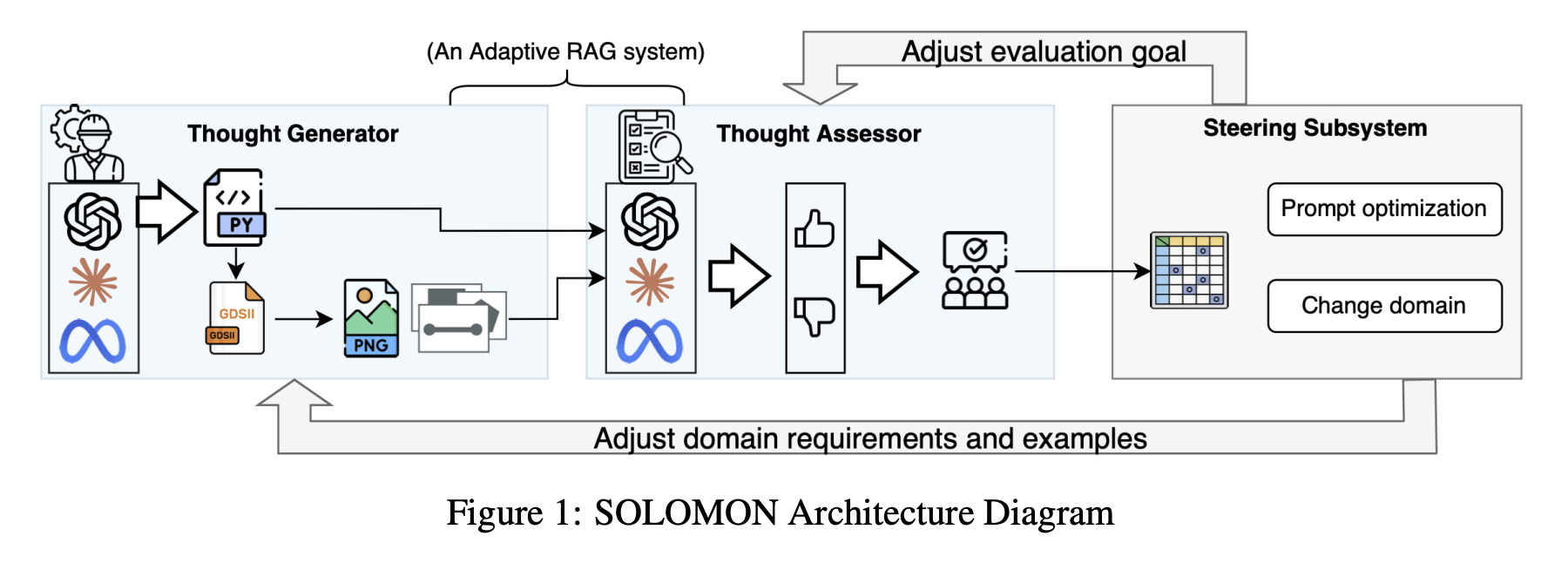
Challenges in Adapting AI for Specialized Domains
Large language models (LLMs) struggle in specialized fields, particularly those requiring spatial reasoning and structured problem-solving. A clear example is semiconductor layout design, where AI must understand geometric constraints to ensure precise component placement.
Limitations of General-Purpose LLMs
General-purpose LLMs have a significant drawback: they can’t effectively convert theory into practical solutions. They may explain technical concepts well but often fail in real-world tasks involving spatial reasoning. In semiconductor layout, accurate placement of components like vias and metal layers is critical, and current models often need extensive human correction, making them inefficient.
Improving LLM Adaptability
Several methods aim to enhance LLMs for specific applications:
- Fine-tuning: Training LLMs with specialized data is resource-intensive.
- Retrieval-Augmented Generation (RAG): This method fetches external knowledge but doesn’t solve structured problem-solving issues.
- In-Context Learning: Provides examples to guide reasoning but is limited in spatial tasks.
While these approaches offer some benefits, they don’t fully address the need for geometric logic in applications like layout design.
Introducing SOLOMON: A New AI Framework
Researchers at IBM T.J. Watson Research Center and MIT-IBM Watson AI Lab have developed SOLOMON, an innovative LLM reasoning network designed to improve adaptability for domain-specific tasks.
Key Features of SOLOMON
- Multi-Agent Reasoning System: Processes spatial constraints and geometric relationships dynamically.
- Iterative Output Refinement: Uses thought assessment to enhance accuracy in problem-solving.
- Efficient Adaptation: Requires minimal retraining for semiconductor layout tasks.
SOLOMON’s Architecture
Inspired by neuroscience, SOLOMON includes:
- Thought Generators: Produce diverse reasoning pathways.
- Thought Assessors: Evaluate and select the best output.
- Steering Subsystem: Allows dynamic modification of objectives for better adaptation.
Experimental Results
In tests involving 25 semiconductor layout tasks, SOLOMON outperformed five baseline LLMs, demonstrating:
- Improved spatial reasoning and design accuracy.
- Fewer runtime errors and scaling issues.
- Effective correction of logical inconsistencies.
The Future of AI in Engineering
SOLOMON signifies a crucial step forward in AI capabilities for real-world applications, focusing on enhancing reasoning rather than just increasing model size. Future research aims to extend this framework to other engineering fields, refine reasoning abilities, and introduce mechanisms for iterative learning.
Take Action with AI
To evolve your company through AI, consider:
- Identifying Automation Opportunities: Find areas that can benefit from AI.
- Defining KPIs: Measure the impact of your AI initiatives on business outcomes.
- Selecting Customized AI Solutions: Choose tools that meet your specific needs.
- Implementing Gradually: Start small with pilot projects and scale based on data.
Connect with Us
For AI KPI management advice, reach us at hello@itinai.com. Stay updated on leveraging AI by following us on Telegram at t.me/itinainews or on Twitter @itinaicom.
To redefine your sales and customer engagement with AI solutions, explore more at itinai.com.
Check out the Paper. All credit goes to the dedicated researchers behind this project.



























